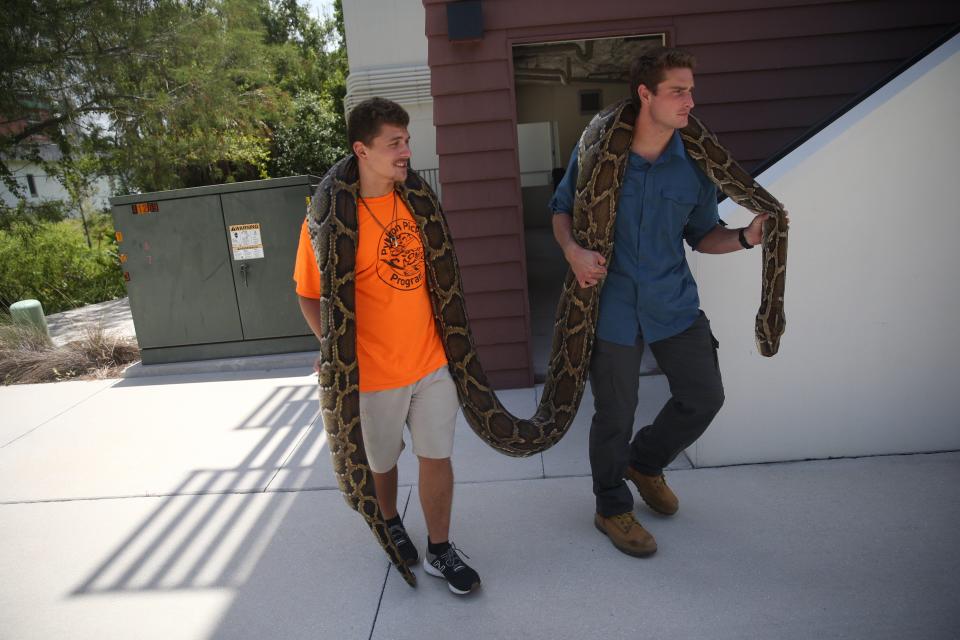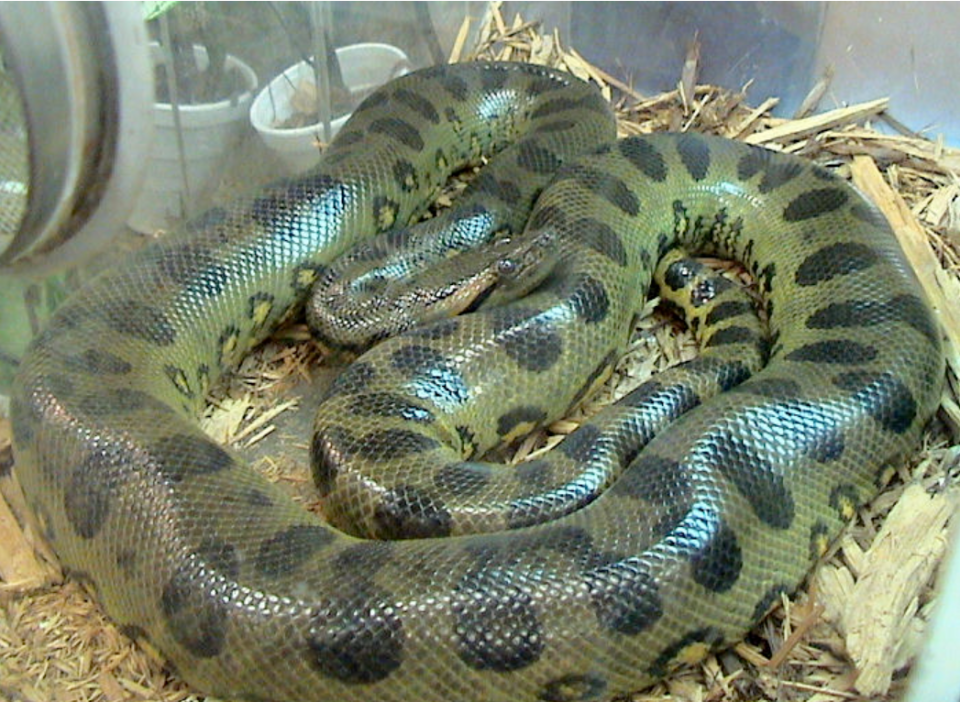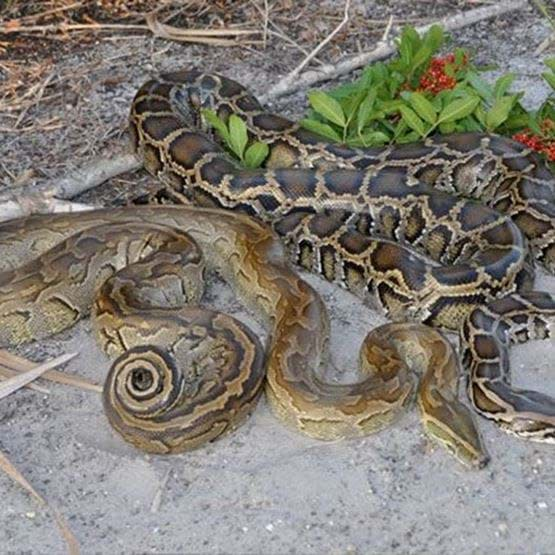It's not just Burmese pythons in Florida: Green anacondas may be breeding in state
A handful of Naples, Florida, snake hunters and their 19-foot trophy Burmese python made international headlines recently as the snake is thought to be the longest Burmese python caught in the wild.
But there are even larger snakes living in Florida as scientists think there could be a breeding population of green anacondas (upward of 25 feet) breeding just outside of Naples.
None of these constrictors are native to Florida, but a few have established breeding colonies. Some of the pythons found in Florida were escaped or released pets, but others have found a way to thrive in the Sunshine State.
Practically all the record books from federal and state wildlife agencies have listed an 18-foot, 9-inch Burmese python as the longest on record in Florida. The 19-footer captured last week topped that.
Biologists with the Conservancy of Southwest Florida (perhaps the state's leader in Burmese python eradication methods) measured the Naples snake last week, which was caught around 1 a.m. on Monday, July 10, in the Big Cypress National Preserve in eastern Collier County.
This beastly snake may be the longest Burmese python caught and documented in the wild, but it's not the biggest snake in the world (or Florida), not by a stretch.

There are other constrictors across the globe that are longer, heavier and maybe even scarier.
Thirteen constrictors are listed on the International Union of Conservation of Nature's Red List of Threatened Species, including, oddly for Florida, the Burmese python.
While there are online tales of 33-foot monsters capable of hunting down and eating humans, wild pythons rarely grow more than 12 to 15 feet. Some female species, however, can grow to 25 feet in the wild.
Here's a look at four other large constrictors, some of which are a tad longer than even the Burmese.
Reticulated python
Considered by biologists to be the longest snake in the world, the reticulated python can grow to more than 20 feet in the wild.
Lore says this snake grows to 30-plus feet and 350 pounds, and there are several undocumented accounts of snakes growing to 22 to 25 feet in length, according to Livescience.com.
"Females generally reach greater lengths than males with most wild specimens reaching around 13-16 feet, although some rare examples may exceed 20 feet," a Florida Fish and Wildlife Conservation Commission website reads. "Typical specimens weigh about 30 to 40 pounds with a max reported weight of 300 pounds for a female specimen."
Reticulated pythons (Python reticulatus) are sometimes confused with Burmese pythons because of their size and camouflage skin pattern.
But these snakes are declining in their home range as an estimated 300,000 snakes are hunted and removed from their home range each year.
Green anaconda
Considered the heaviest of the constrictors, green anacondas (Eunectes murinus) are like Burmese pythons and other constrictors in that they'll eat almost anything.
"The list of potential prey items of an anaconda is extensive and varied, and consists of birds, amphibians, reptiles, mammals, and fish," a United States Geological Survey, or USGS, website reads. "Small individuals may climb trees to raid bird nests. The green anaconda swallows its prey whole, even prey much larger than the diameter of their mouths. They are known to consume large prey such as peccaries, capybaras, tapirs, deer, and sheep."

And the females get much larger than males and may grow to more than 25 feet in the wild, according to USGS.
"These snakes also exhibit the greatest sexual size dimorphism of any terrestrial vertebrate," says USGS. "Breeding females are at least five times the size of breeding males."
A handful of green anacondas have been found in the wild and captured across the state, including one near the Naples area, according to USGS records.
Scientists say there is possibly a colony established in the Fakahatchee Strand Preserve State Park in Collier County.
Boa constrictor
This species, too, has been caught in the wild in Florida, and scientists say a breeding population has established itself in eastern Miami-Dade County.
FWC says this snake is often confused with the Burmese python as, to the casual observer, they have similar camouflage skin patterns, but boat constrictors only grow to around 11 feet ― well short of the recent 19-foot record for Burmese pythons caught in the wild.
The scientific name for this species is simply boa constrictor.
It's unknown if the boa constrictor will spread as the infamous Burmese python has in recent decades. Although shorter in length than Burmese and other species, boa constrictors, too, would be an apex invasive predator that could cause damage to Florida's ecosystems.
North African python
The North African python (python sebaeis), one of the planet's largest snakes, tops out at just over 20 feet in the wild.
FWC says this species is particularly suited to farm fields and canals ― of which South Florida has an extensive network.
For subscribers: Some Florida pythons may actually be a mix of multiple snake species, report says
More: Largest python snake nest in Florida history discovered in Everglades

"The average size found in Florida is around 10 feet in length, but they can grow up to 20 feet long in their native range," an FWC website reads. "While very similar in appearance to the Burmese python, the pattern on the back of the Northern African python is less defined. In addition, their belly scales display a pattern of black and white markings, while those of the Burmese python are white."
North African pythons have a cloudy type of skin appearance when compared with Burmese pythons, according to FWC.
This article originally appeared on USA TODAY NETWORK: Snakes larger than Burmese pythons found in pockets of Florida

